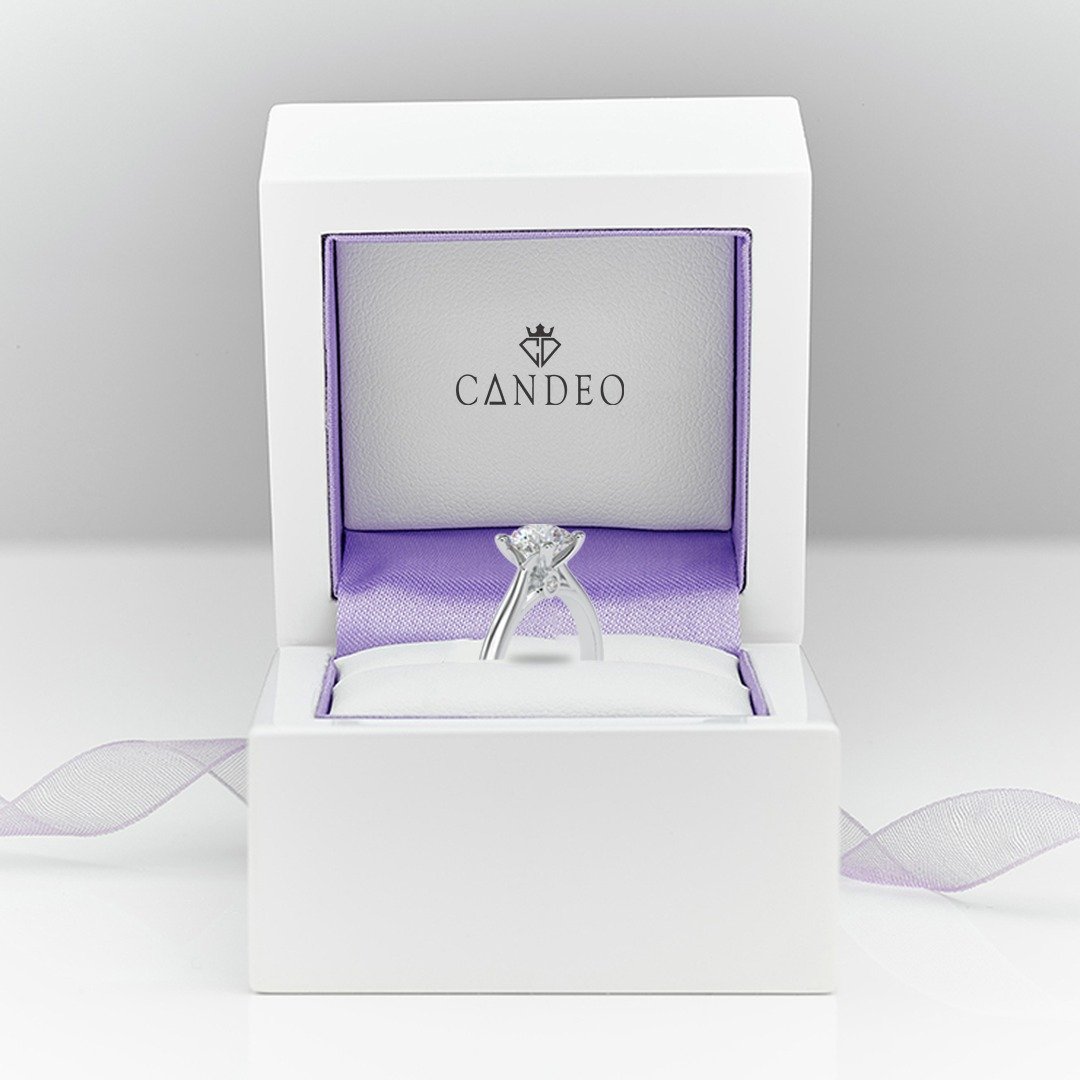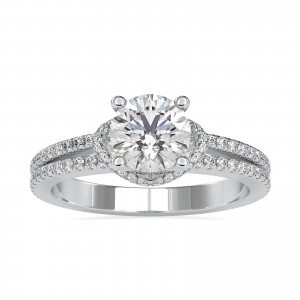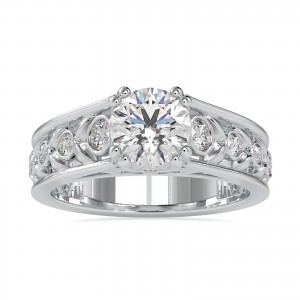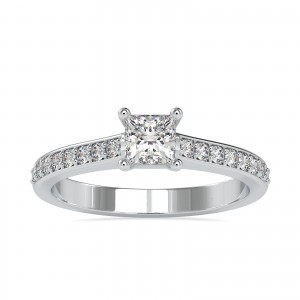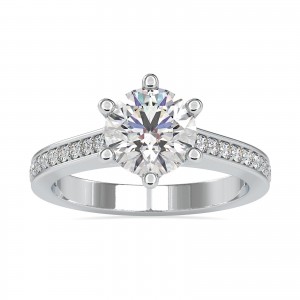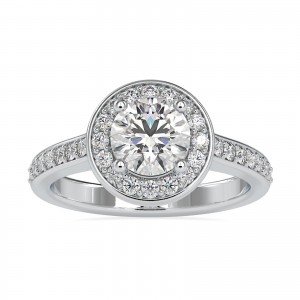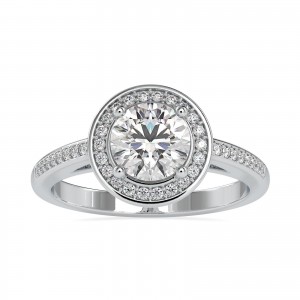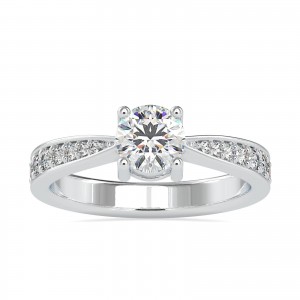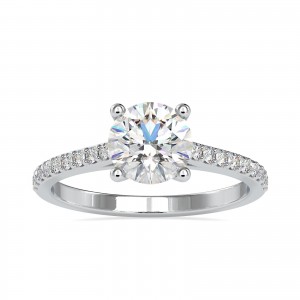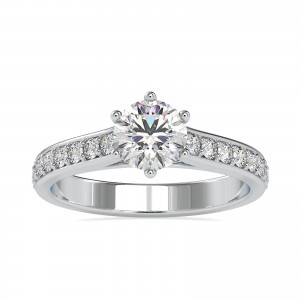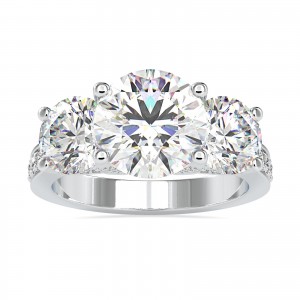Engagement Rings
Learn About Lab Diamonds
WHAT IS LAB CREATED DIAMOND
The number one question we get is, "Are real diamonds created by laboratory diamonds?" "That " (also called man-made diamonds or lab-grown diamonds) A very simple yes is the answer. Its nature is the only thing that makes a lab-created diamond distinct from a natural diamond. Using cutting-edge technology that replicates the natural diamond growing process, a lab-created diamond is 'grown' within a laboratory.The effect is a diamond made by man that is the same chemically, mechanically, and optically as those grown under the surface of the Earth. Diamonds produced by the Lab are not fakes. Cubic zirconias, they're not. They all have the same physical and chemical characteristics as a mined diamond. Stephen Morisseau, a spokesperson for the American Gemological Institute, a non-profit organisation administering the international system of diamond grading. Often, synthetic diamonds are referred to as lab-created diamonds. Although not technically inaccurate, the word "synthetic" may be the reason why individuals assume that laboratory-created diamonds are "fake." If we compare them to other famous diamond simulators, it's obvious that diamonds were actually produced, the real deal.
HOW ARE LAB-CREATED DIAMONDS GROWN?
It's important to understand how mined diamonds are formed before discussing lab-created diamonds. The processes are extremely similar, with the exception that one occurs naturally and the other in a laboratory. Diamonds that have been mined Diamonds are thought to have formed deep within the Earth between 1 billion and 3 billion years ago, according to geologists. They don't know how those diamonds came to be, but they are grateful for them. While they are unsure how those diamonds were formed, they believe the process begins with carbon dioxide buried 100 miles beneath the Earth's surface. The carbon dioxide is heated to a temperature of over 2,200 degrees Fahrenheit and compressed to a pressure of 727,000 pounds per square inch. The diamonds are then transported to the surface of the Earth from deep within the Earth's core. The diamonds are then transported to the surface via deep volcanic explosions from deep within the Earth's core. Diamonds created in a laboratory High Pressure-High Temperature (HPHT) and Chemical Vapor Deposition (CVD) are the two methods used in laboratories to grow diamonds (CVD). A belt press, a cubic press, or a split-sphere (BARS) press are the three manufacturing processes used to create HPHT diamonds. A belt press, a cubic press, or a split-sphere (BARS) press are the three manufacturing processes used to create HPHT diamonds. All of these processes create a high-pressure, high-temperature environment that is conducive to diamond growth. A small diamond seed is inserted into carbon to form an HPHT diamond. The seed is exposed to temper using one of the manufacturing processes listed above. The seed is heated to about 1500 degrees Celsius and pressurized to about 1.5 million pounds per square inch using one of the manufacturing processes listed above. Around the starter seed, pure carbon melts and begins to form a diamond. The carbon diamond is then carefully cooled to form. A CVD diamond starts with a thin slice of diamond seed, which is typically an HPHT product. A CVD diamond starts with a thin slice of diamond seed, which is frequently an HPHT diamond. The diamond seed is heated to around 800 degrees Celsius in a sealed chamber. The chamber is filled with carbon-rich gases, such as methane, as well as other gases. Using technology similar to microwaves or lasers, the gases are ionized into plasma. The ionization causes the molecular bonds in the substance to be broken. The ionization of the gases breaks the molecular bonds, allowing pure carbon to adhere to the diamond seed and crystallize slowly.
Benefits Of Lab Grown Diamonds
Silver
Silver
Silver
Silver
Silver
Silver
Silver
Silver
Silver
Silver
HOW ARE LAB-CREATED DIAMONDS CERTIFIED AND GRADED?
Lab-created diamonds are graded and certified using the same process as mined diamonds. A gem lab specializing in diamond grading receives the diamonds. The 4cs (cut, clarity, colour, and carat — more on those later) are used by the majority of these labs, but a few use their own criteria. The most popular diamond certification labs are: Gemological Institute of America (GIA) American Gem Society (AGS) International Gemological Institute (IGI) For all of the diamond certification labs, the grading process is essentially the same. At the lab, several gemologists grade each diamond independently. To determine the final grade, the individual grades are compiled and analyzed. This method is intended to provide an unbiased grade for each diamond. If a diamond is returned for a second grading, it's not uncommon for it to receive a different grade, not only from a different lab but also from the same lab. As a result, there are many divergent viewpoints among consumers and diamond retailers about which lab is the "best." It's important to remember, however, that those viewpoints are entirely subjective. Each lab, like everything else in life, has its own set of advantages and disadvantages. A diamond retailer selects a lab because they are confident in its ability to grade diamonds fairly. If diamond certification is important to you, you should have an open and honest discussion with your jeweller about which lab they use and why. Jewelers want you to be confident in your purchase above all else, so don't be afraid to ask questions to find the best lab-created diamonds for your engagement ring or jewellery. The 4cs – cut, clarity, color, and carat – are used to assess a diamond. They evaluate the diamond based on how well it has been cut down from its natural state into a jewel, how flawless and clear it is, and its color. They evaluate the diamond based on how well it has been cut from its natural state into a jewel, how flawless and clear it is, and its size. An explanation of each category, as well as the various measurements used for each, can be found below.

-749x747.jpeg)
